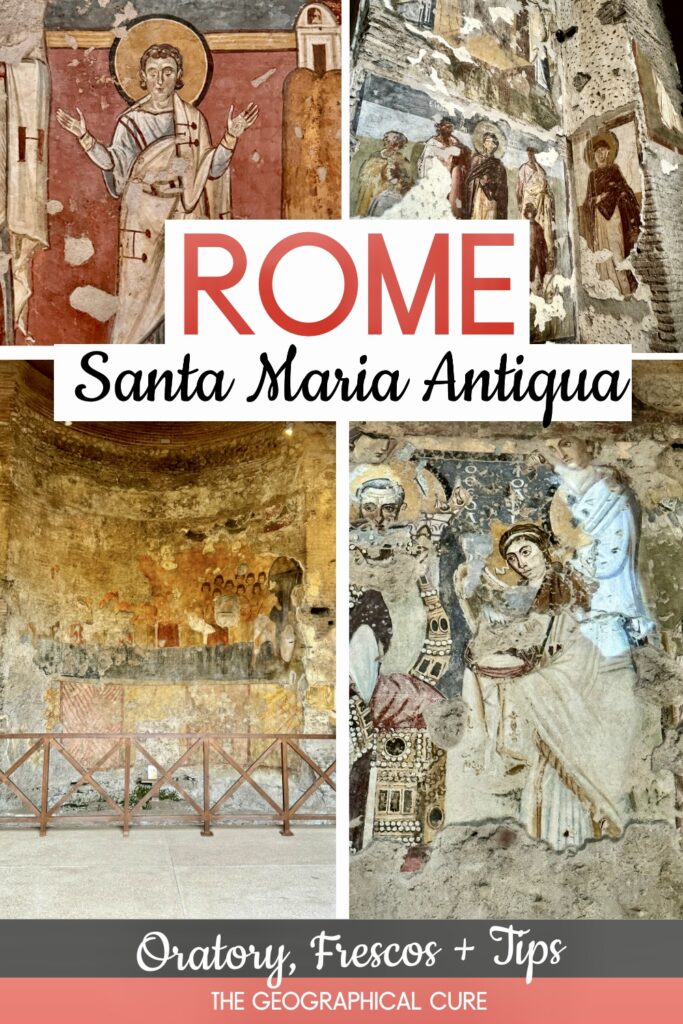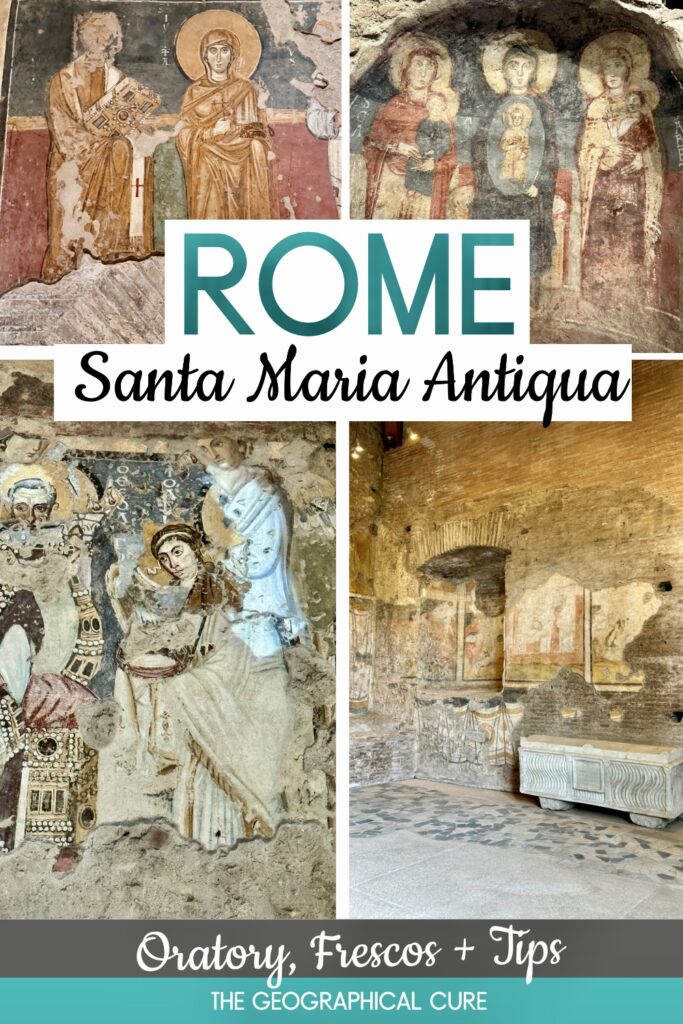Santa Maria Antiqua and the Oratory of the Forty Martyrs are Rome’s earliest remaining Christian sanctuaries. They are tucked away in a corner of the Roman Forum.
These sites are captivating portals into the dawn of Christianity in Rome.
Adorned with rare early Christian frescoes, they showcase a blend of Western and Eastern influences, weaving together religious, cultural, and artistic threads into a tapestry of exceptional importance and stunning beauty.
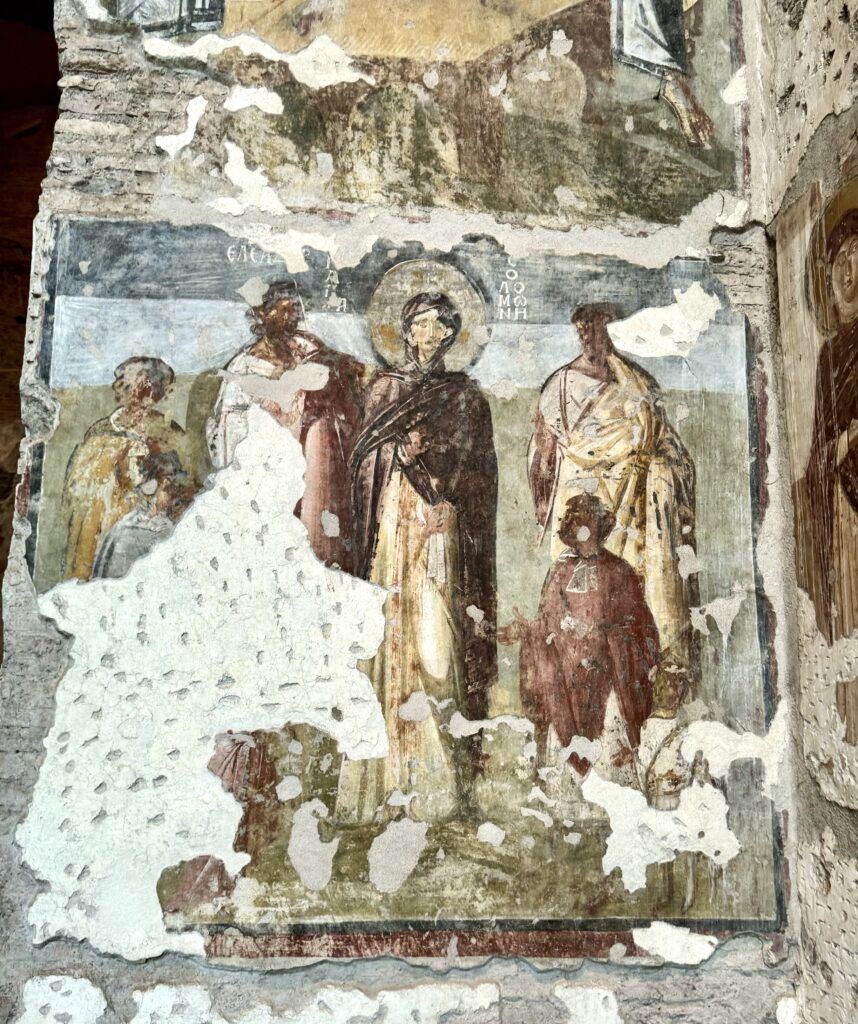
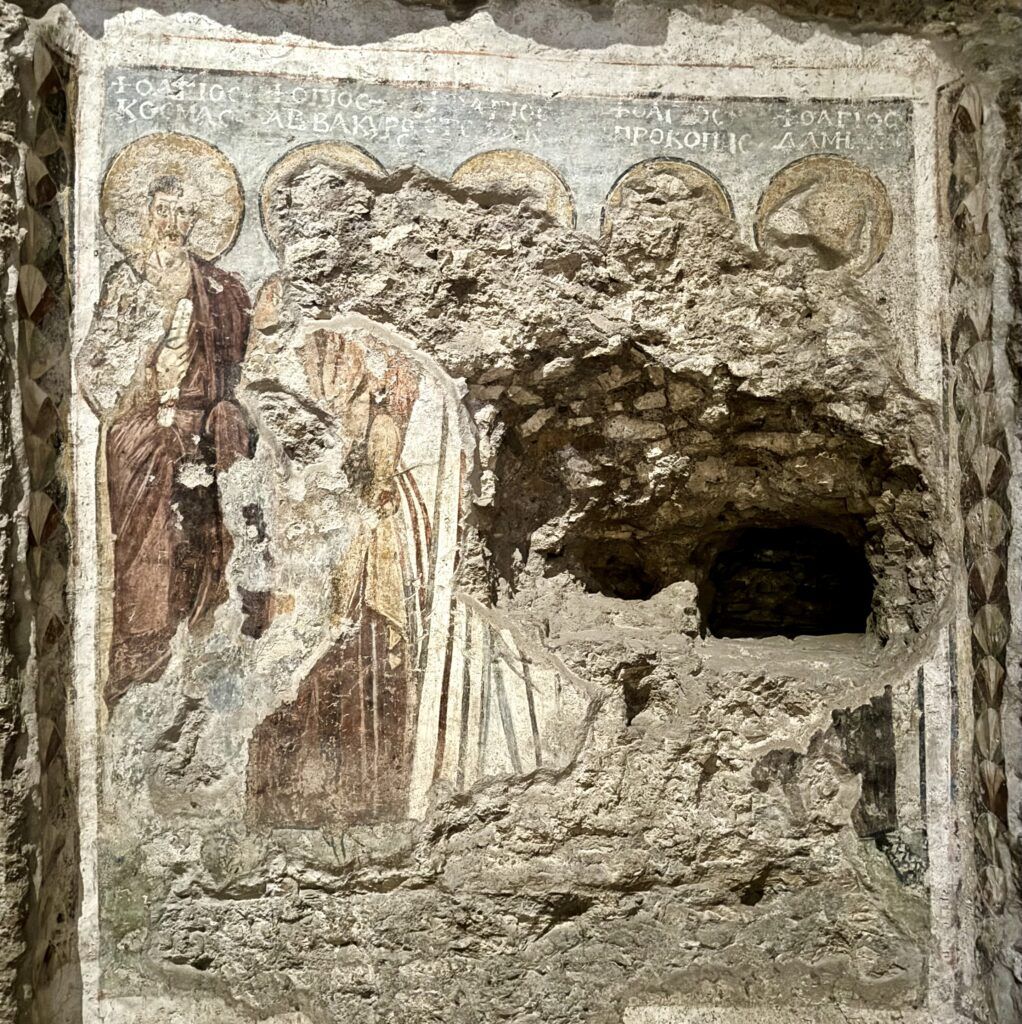
They are extremely rare images. In the east, many such images were seen as suspect and destroyed during a period called the Iconoclasm in Eastern Europe. Images were outlawed in the 8th and 9th centuries.
Because the ones in Rome were buried for centuries, they survived and weren’t altered by subsequent interventions.
There are a few other places to find early Christian frescos in Rome, like the Basilica of San Clemente. But the oldest ones are in Santa Maria Antiqua and the Oratory.
In this guide, I’ll tell you what to see and give you must know tips for visiting.
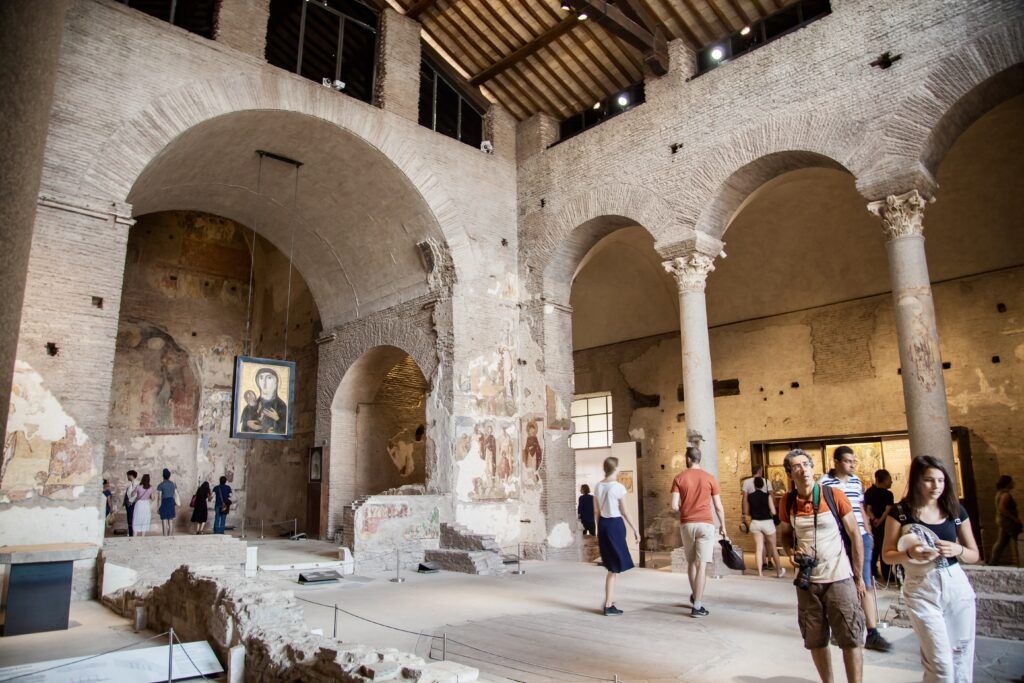
Santa Maria Antiqua
Santa Maria Antiqua is tucked away in Rome’s bustling Roman Forum at the foot of Palatine Hill. It’s a gem of a church with a story as old as the city itself.
Built within a 1st century structure by Emperor Domitian, this place was a spiritual hub for centuries. In 847, an earthquake left it forgotten and abandoned.
Fast forward to the 20th century, and it’s like we’ve struck historical gold. Archaeologists unearthed it, kicking off years of study and careful preservation. In 2015, after a 26 year restoration, the church was opened to the public.
There is a main sanctuary, apse, two chapels flanking the apse, and side aisles to explore.
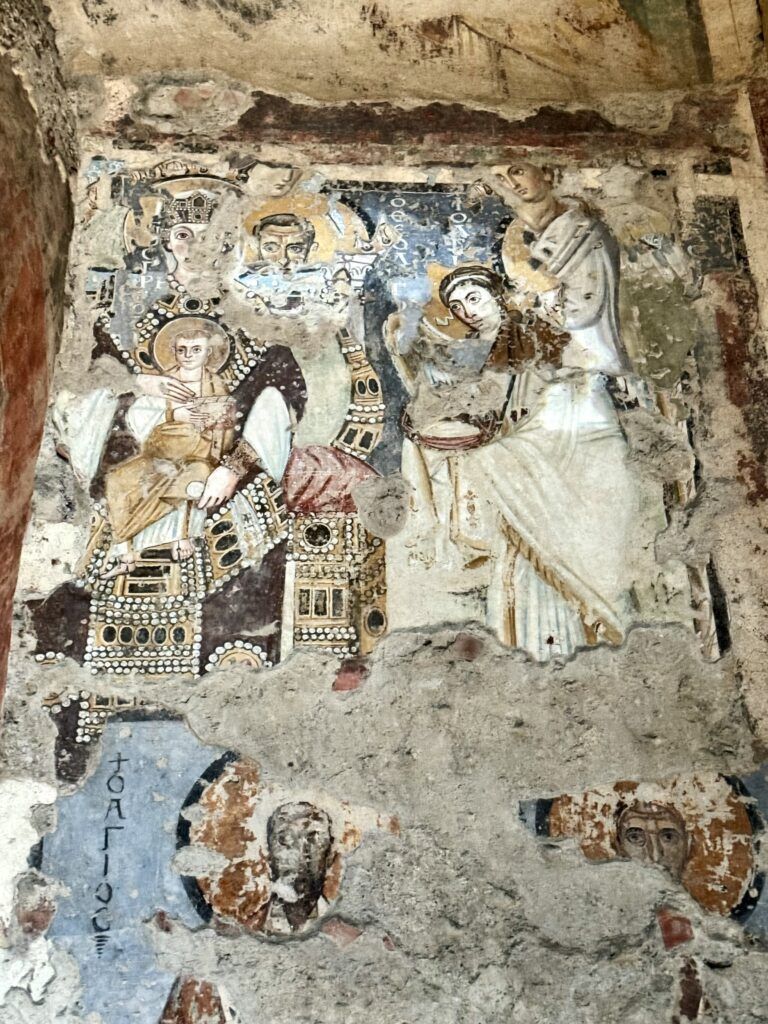
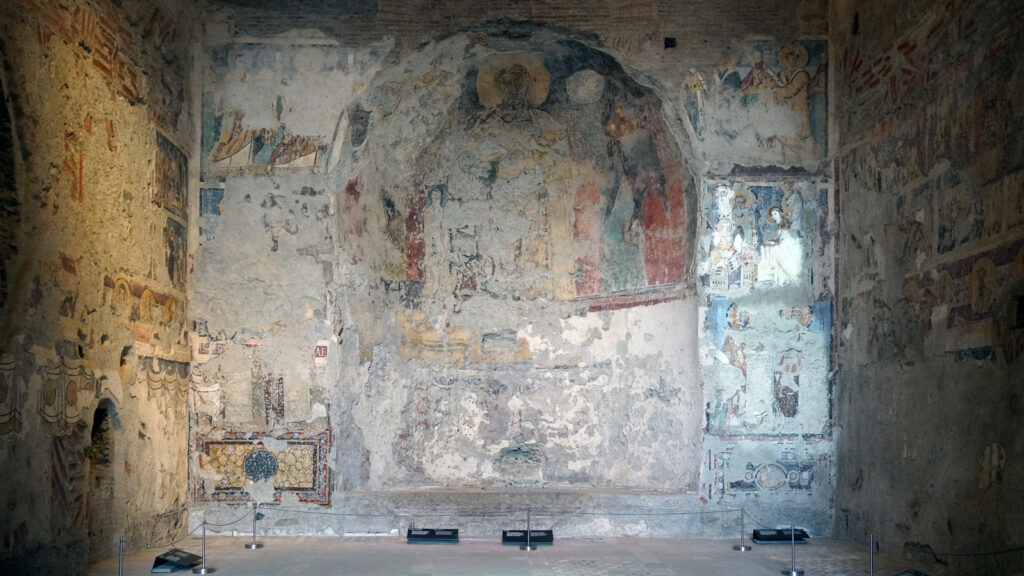
What’s so interesting about it? Well, it’s a treasure trove of early Christian art and architecture, offering a rare peek into Roman life in the 6th to 9th centuries.
It’s a life that shared connections to the Byzantine Christian world of the eastern Mediterranean.
You have to use some imagination because the frescos are only partly restored and noticeably eroded. And there are layers of superimposed frescoes in some places, as new frescos were painted right over old ones.
Still, every inch of the church is splashed with faded Byzantine style frescoes. They depict biblical tales, haloed saints (both eastern and western), and martyrs coming to life right before your eyes.
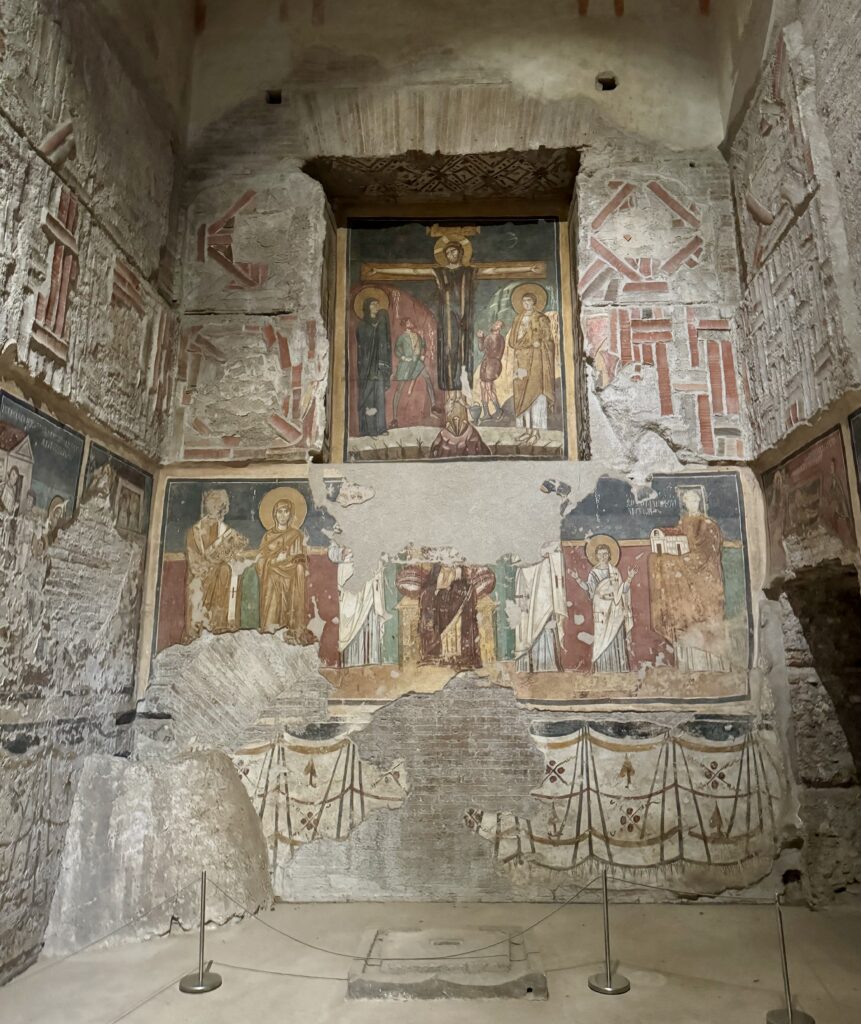
Among other things, you’ll see:
- one of the world’s oldest images of Jesus’ crucifixion (he’s in a sleeveless blue robe)
- an annunciation scene with the “fair angel”
- first Roman image of Mary as a enthroned queen or royal empress
- images of the apostles
- images of medical saints who offered free care
The showstopper? The Chapel of Theodotus, the best preserved space to the left of the apse. It’s decked out with the dramatic tales of St. Cyricus and St. Julitta. It’s so magnificent, it’s dubbed the medieval era’s Sistine Chapel.
This is where you’ll see the large scale crucifixion. Below that, is a rectangular fresco showing the Madonna and child being venerated by Saints Peter and Paul.
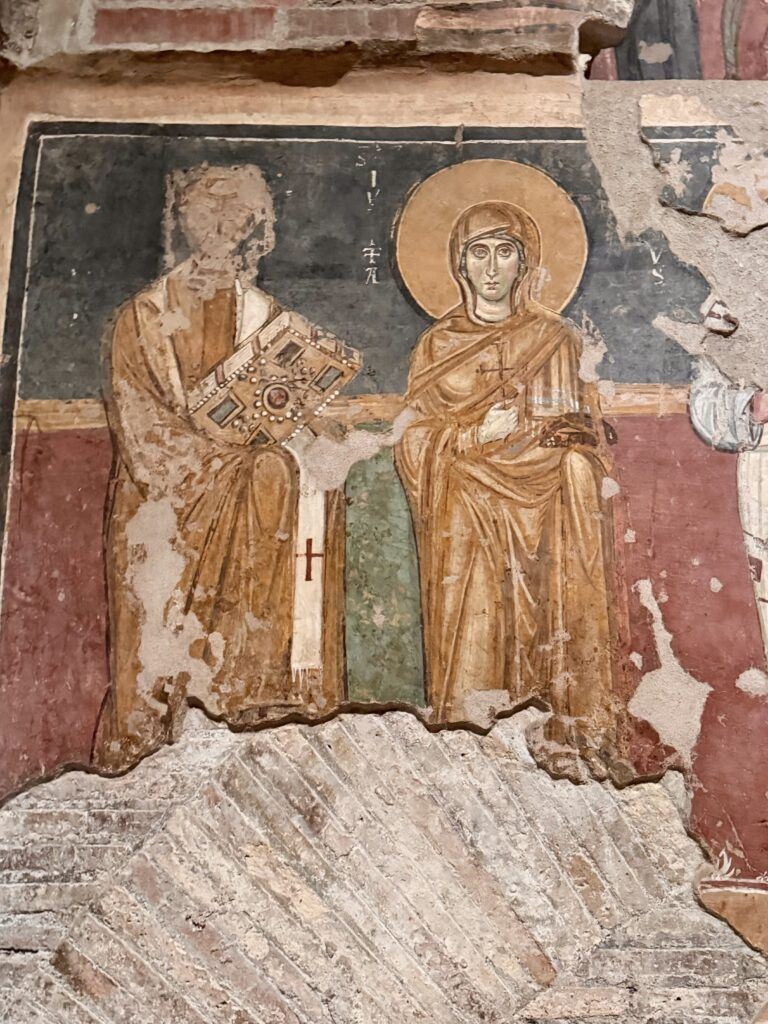
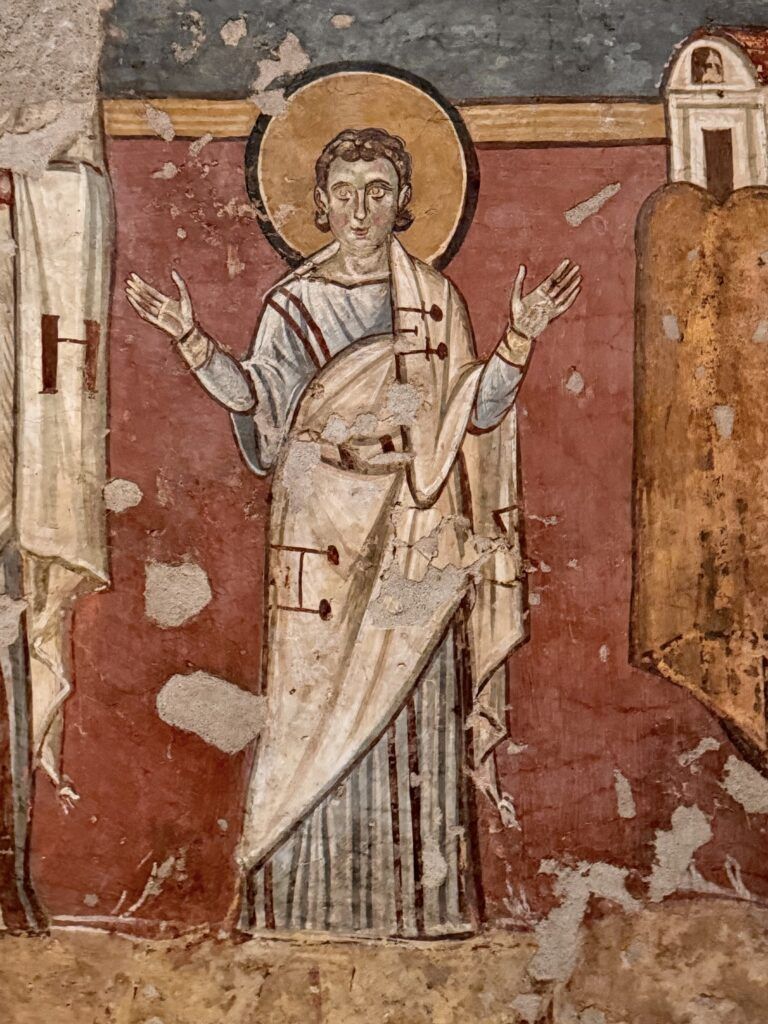
The largest fresco in found in the left aisle. You’ll see a long row of holy men flanking Christ, who sits on a throne.
To his right are venerated saints of the Roman church. On the left are eastern theologians and bishops.
There are five sarcophagi in the church as well, two along the left aisle. The most important one is from the 3rd century.
It was discovered in 1901 below the central nave. It’s a tub-shaped sarcophagus that depicts Christ’s baptism in the River Jordan and stories of the prophet Jonah.
It’s of exceptional importance because it is believed to be the very first sarcophagus to present bible scenes and thus be explicitly Christian in nature.
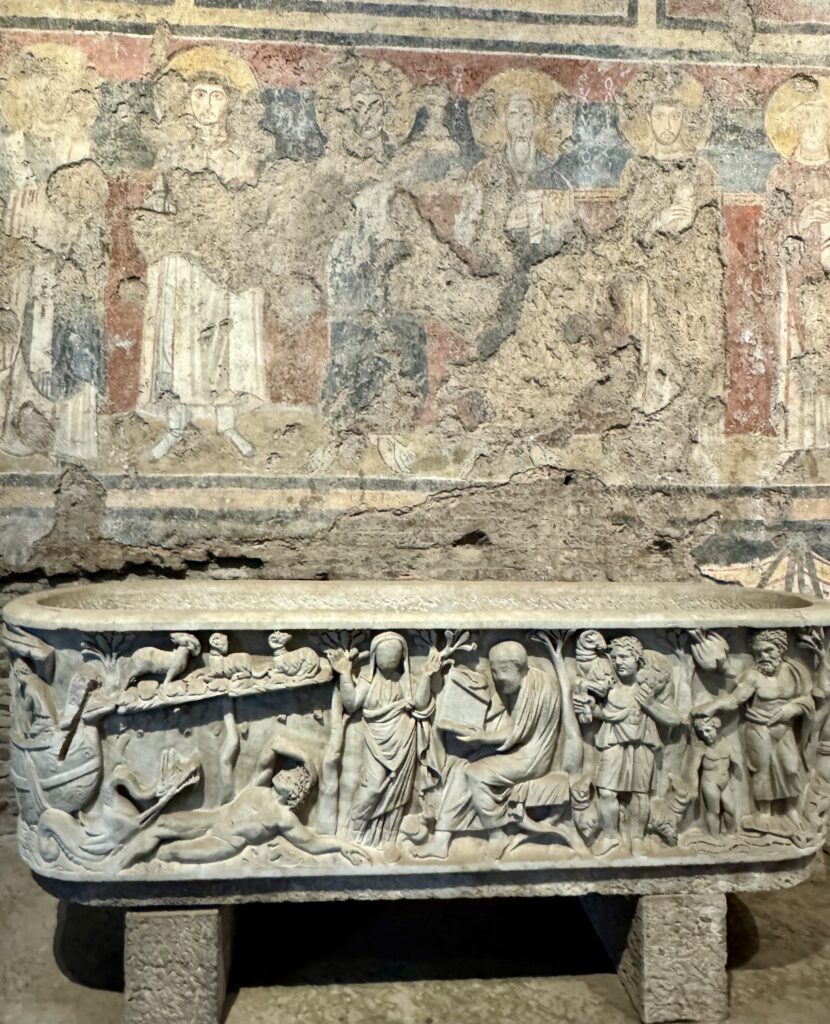
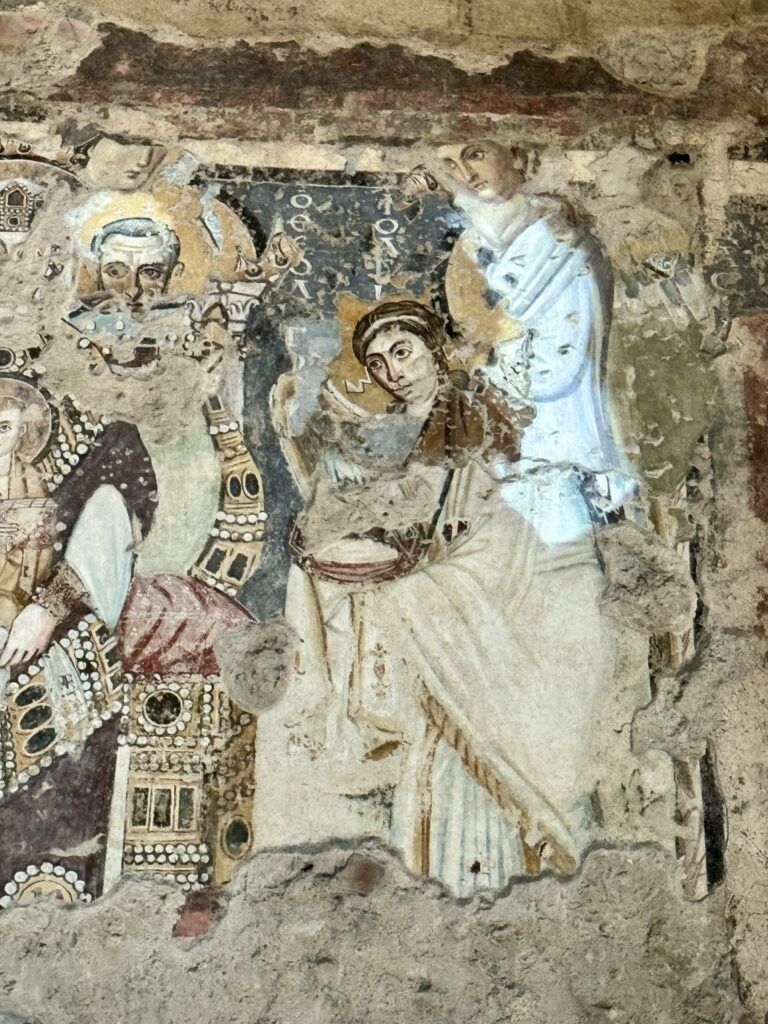
The Palimpsest Wall (shown above) is also extremely interesting. This is where you can see layers of frescos superimposed on one another.
There is the Mary Regina I mentioned above from the 6th century on the left side. Above that is an annunciation scene from the 7th century with the face of Mary and the “fair angel” in white. In the middle (under Mary) is a church father with a gold halo from the 8th century.
Most of the frescos in the church are captioned. So you will have an idea of what you are seeing.
Some rooms, including the chapel, have special 3D sound and light effects. Lights and projections flicker on the walls, giving you a glimpse of how the frescoes looked centuries ago. This was brilliant!
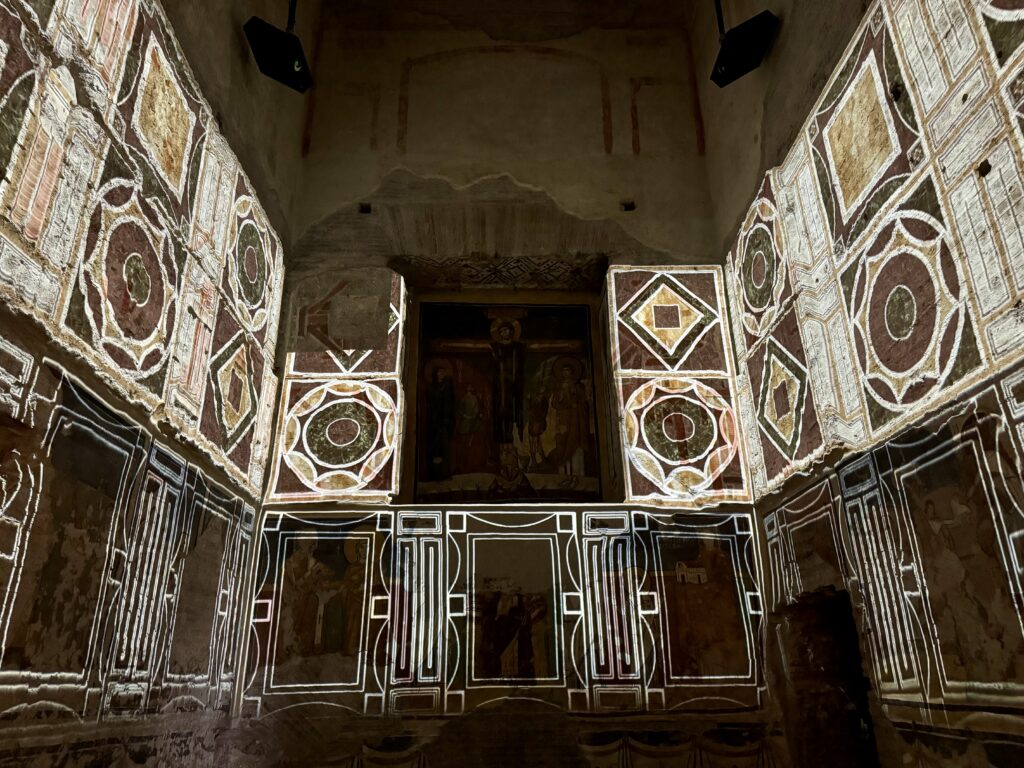
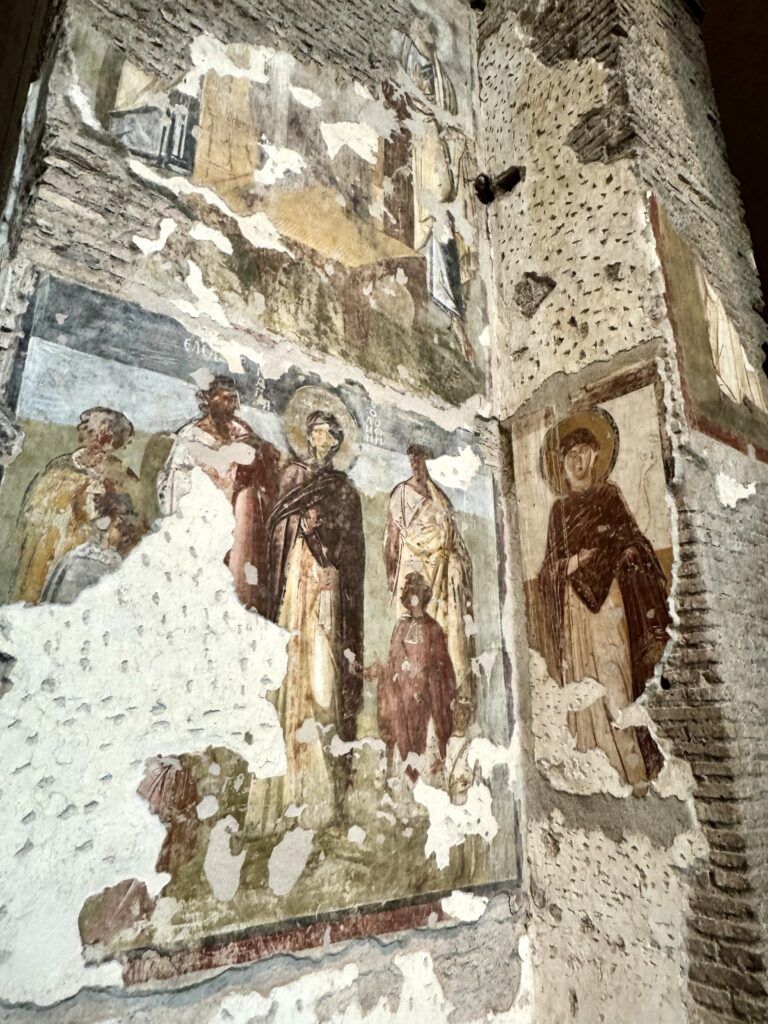
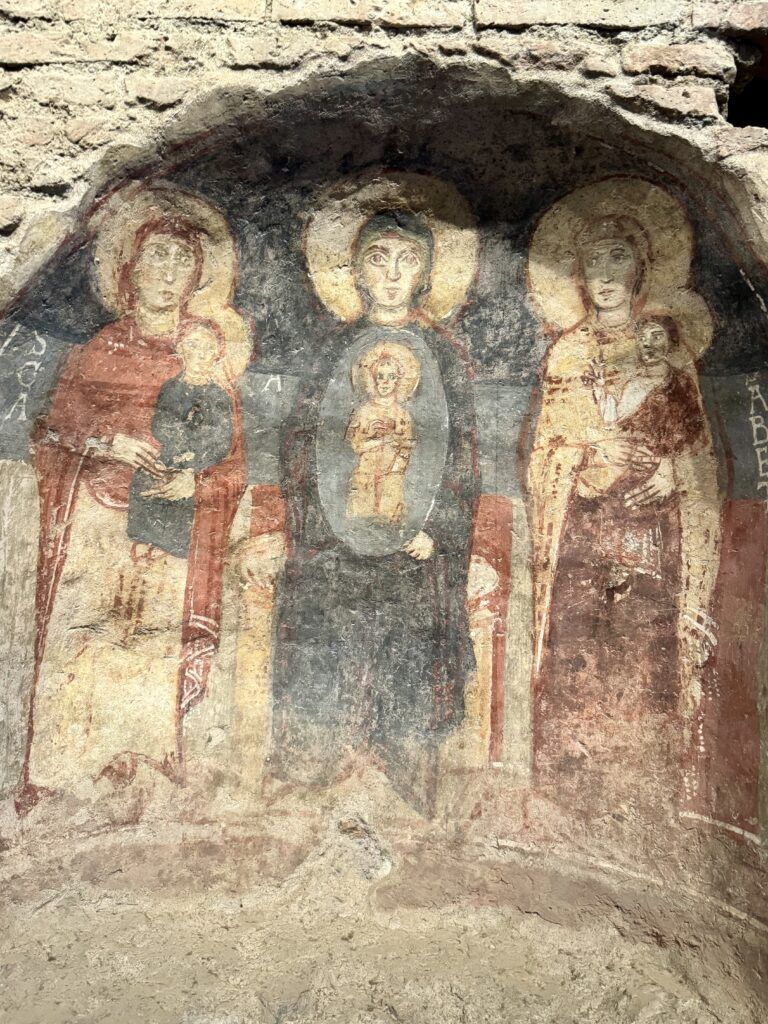
In the center of the church is the black cult icon of the Madonna. It’s hanging suspended from the ceiling in front of the apse.
The 6th century icon of Mary and Jesus is Rome’s oldest depiction of the scene. The dark hue is thanks to the passage of time and candle smoke.
The original is safe in another church (Santa Francesca Romana) because of humidity problems in Santa Maria Antiqua. But a replica is here to keep its spirit alive.
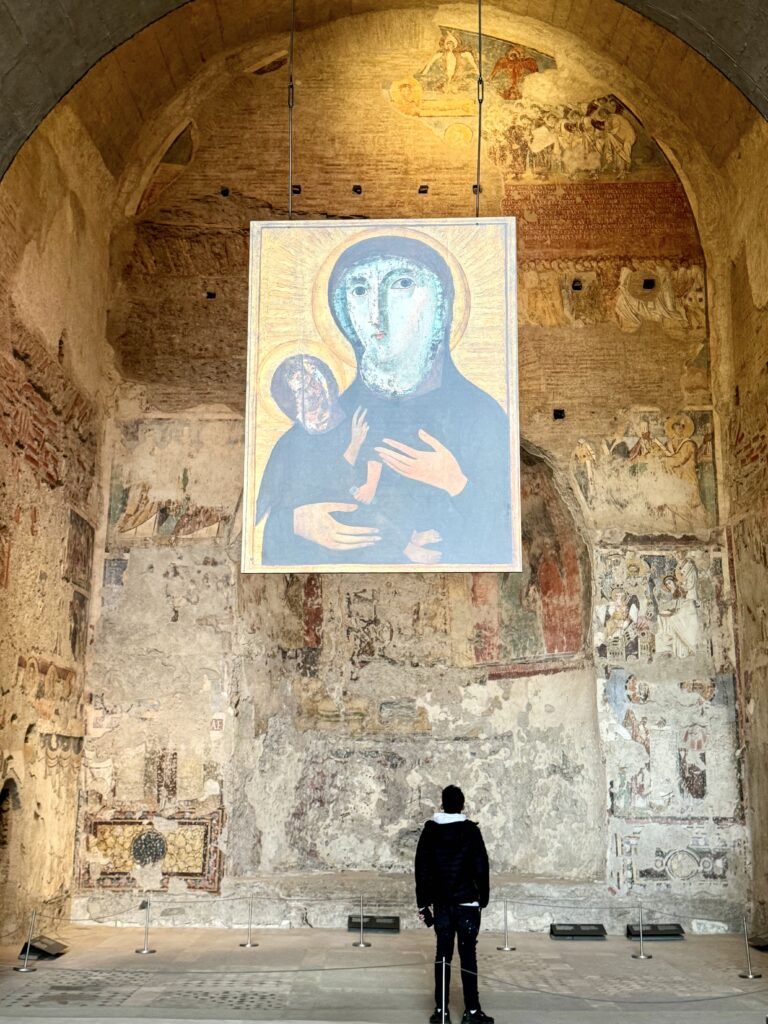
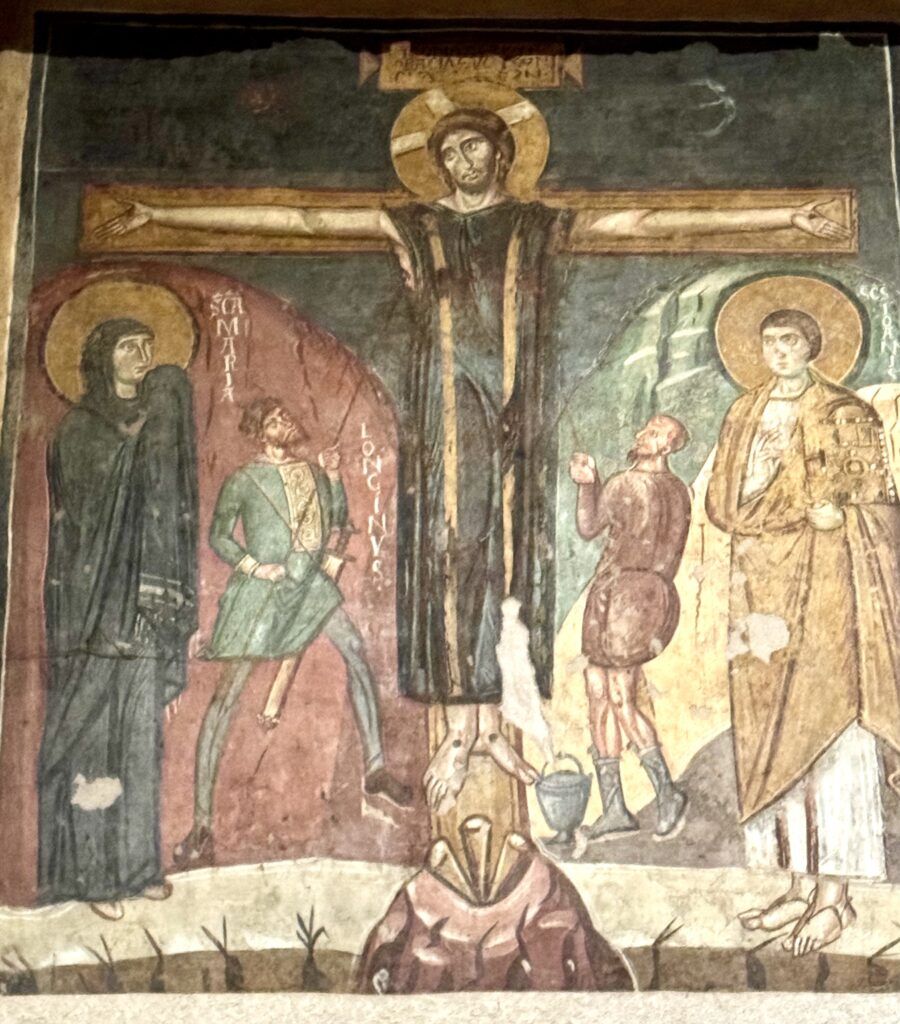
You can only visit the Santa Maria Antiqua with a SUPER ticket for restricted archaeological sites.
For more information on SUPER ticket sites, you can check out my guide to the SUPER ticket.
You can purchase it on the Coop Culture website or buy a ticket on Viator, a third party seller. You can put the Viator app on your phone for easy access to your booking.
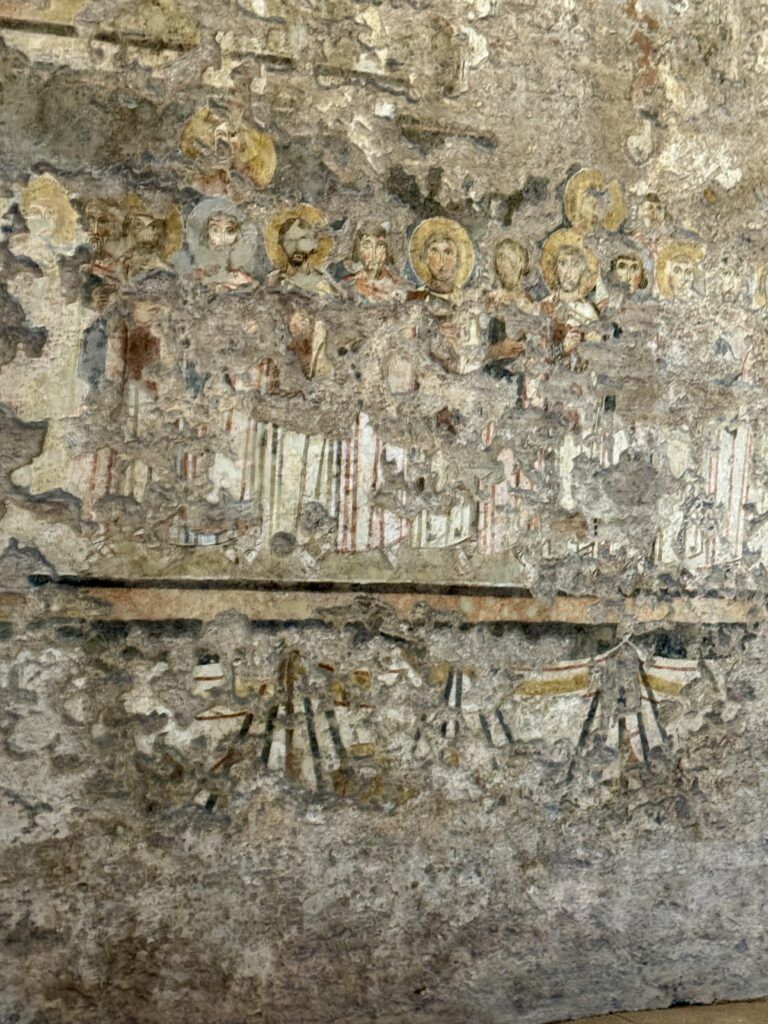
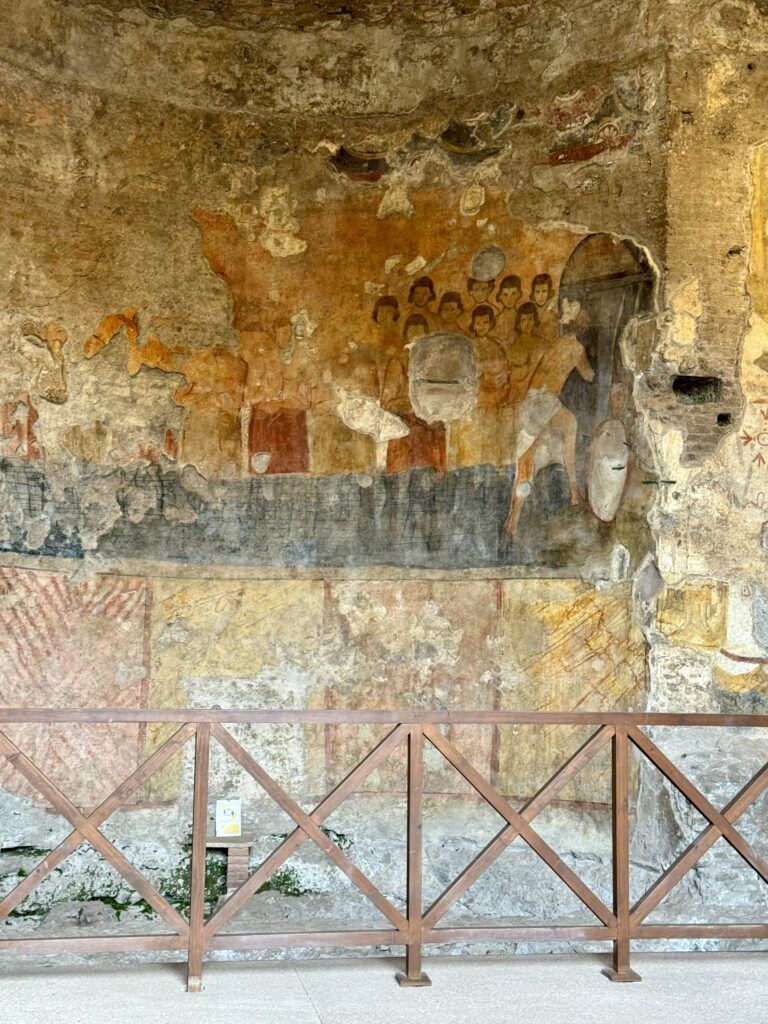
Oratory of the 40 Martyrs
Adjacent to Santa Maria Antiqua is the Oratory of the Forty Martyrs. This smaller chamber is significant for its own unique set of frescoes from the 8th and 9th centuries.
The oratory is named after the Forty Martyrs of Sebaste. They were a group of Roman soldiers who were executed for their Christian faith by Diocletian.
The walls are adorned with paintings depicting various saints and martyrs, including the eponymous Forty Martyrs. These artworks are crucial examples of early medieval Christian art.
The frescos show the martyrs’ torture and martyrdom. They were killed by being forced to stand in an icy lake at night.
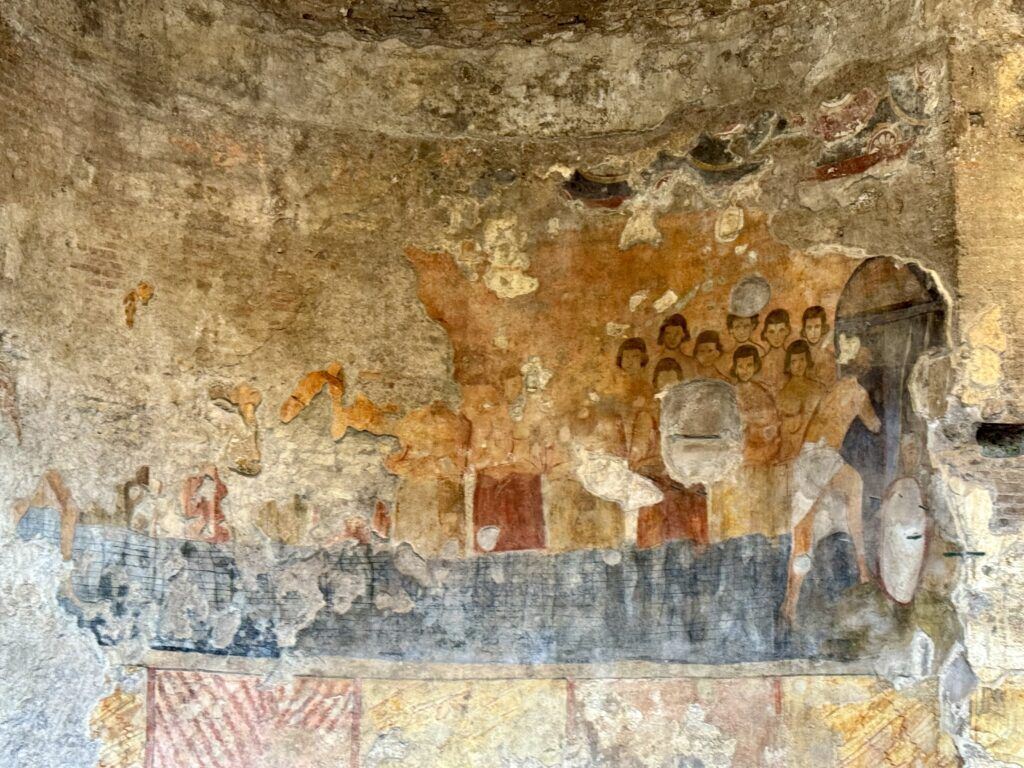
One of them gives up and heads to the hot baths nearby for heathens. His place is taken by a guard, who converts to Christianity after seeing the martyrs’ bravery.
On the right hand wall, there’s a fresco of St. Anthony. On the left wall, there’s a large, poorly preserved fresco of the Forty Martyrs in glory. They are depicted as haloed imperial court officials, in white robes edged with purple.
The floor preserved fragments of marble from the Middle Ages.
The Oratory likely served as a place for private prayer and devotion, reflecting the personal and communal aspects of early Christian worship.
It was likely dedicated to the cult of St. Andrew. The saint’s veneration focused on his association with water miracles and protection. He’s often invoked for protection against floods and is considered the patron saint of fishermen and sailors.
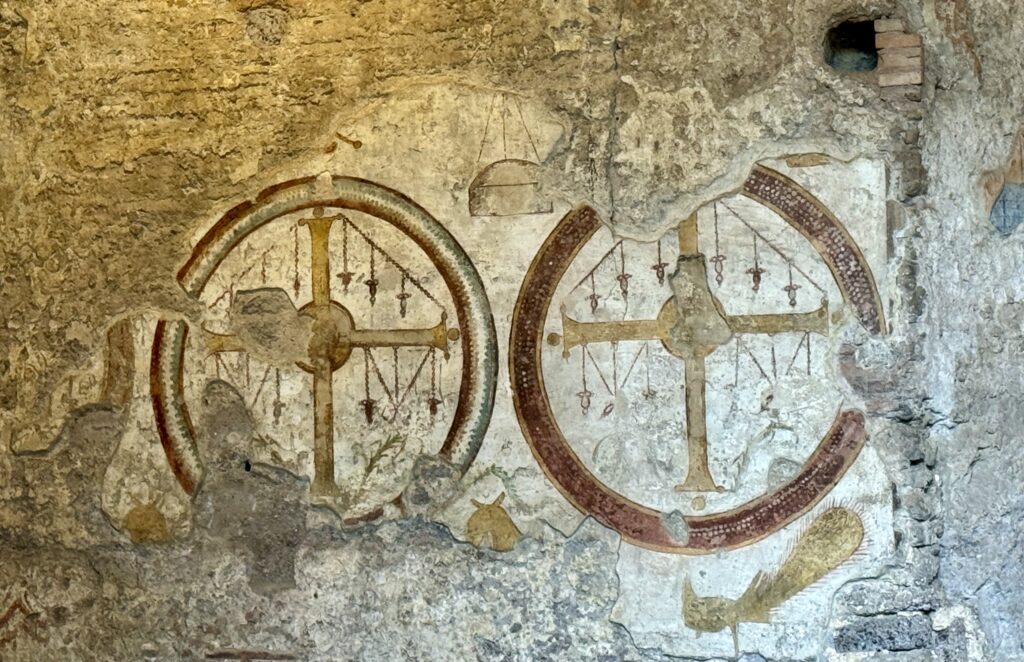
Practical Guide & Visiting Tips
Address: Foro Romano. The two sites are near the Temple of Castor and Pollux.
Hours: 9:30 am to 3:45 pm. Last entrance at 3:00 pm. In the summer, months, open until 5:30 pm.
Ticket: These two sites can only be visited with the SUPER ticket. They are not part of the regular trifecta ticket that includes the Roman Forum.
Pro Tip: If you don’t have a SUPER ticket, you can also visit this site on a a private guided tour. I took this tour and I have to say the archaeologist was excellent.
I hope you’ve enjoyed my guide to Santa Maria Antiqua and the Oratory of the 40 Martyrs. You may find these other Rome Tavel guides useful:
- 3 day itinerary for Rome
- 4 day itinerary for Rome
- 5 day itinerary for Rome
- Hidden gems in Rome
- Best museums in Rome
- Archaeological sites in Rome
- Guide to the Borghese Gallery
- Guide to the Capitoline Museums
- Guide to Palatine Hill
- Guide to the Roman Forum
- Guide to the Colosseum
Pin it for later.

